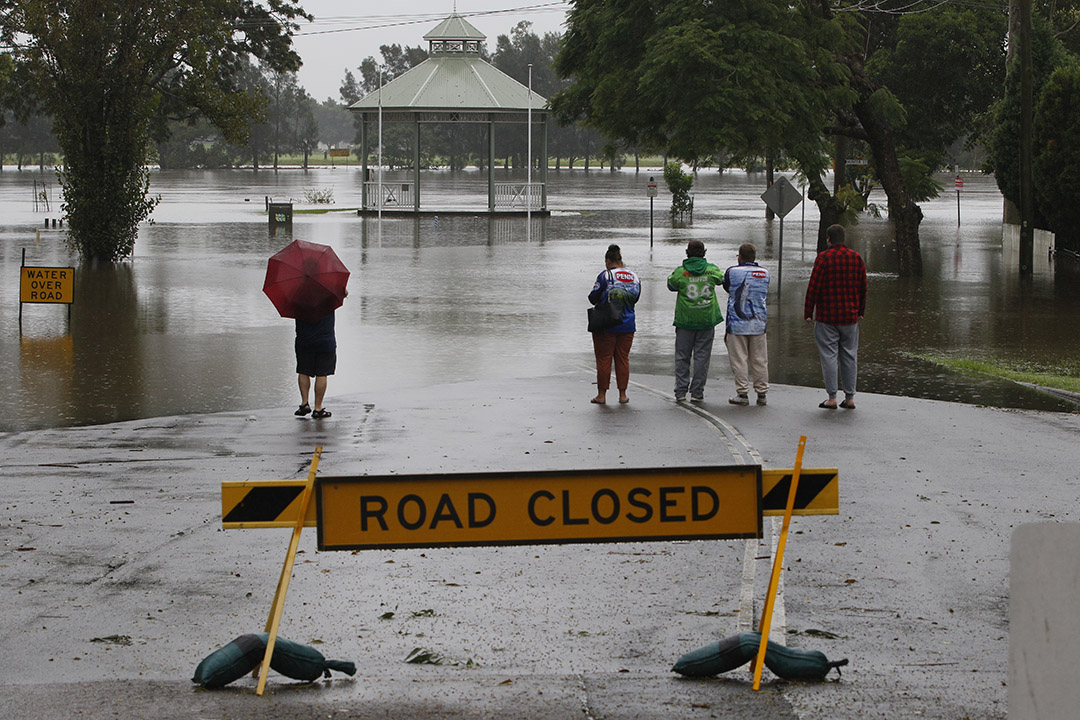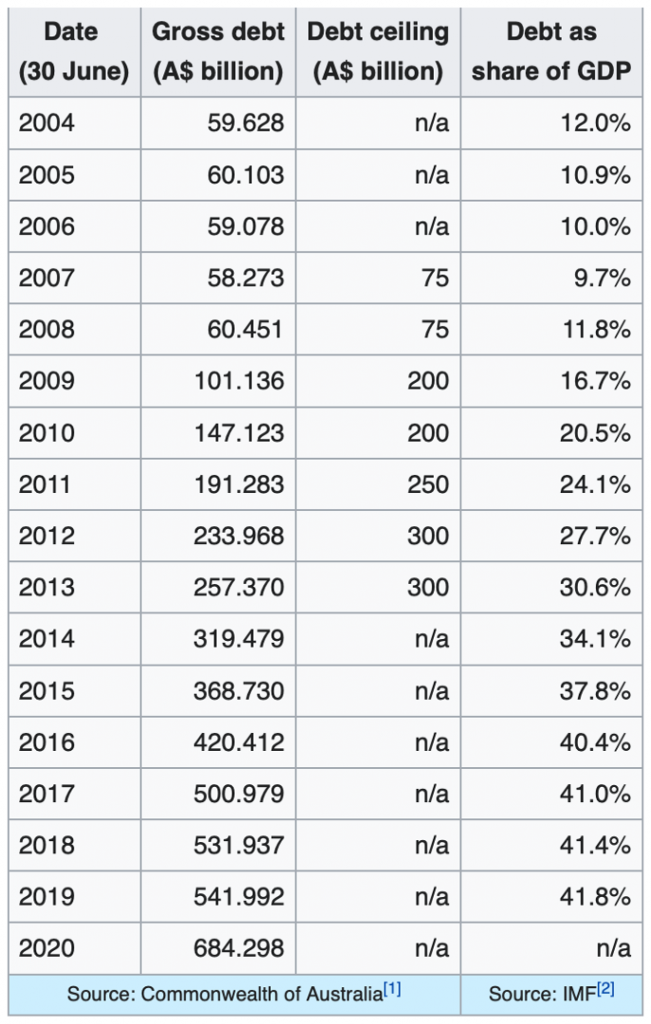

We’re told that this one in a 100 years weather event will be over by Wednesday and the sun will shine again over New South Wales. However, the remaining black clouds will be linked to the cost of the clean-up. Combined with other outlays, this could push the Australian Government’s debt over a trillion dollars by 2023-24!
But how worrying is that? Let’s investigate.
To put the above into perspective, look at the table below to see how our recent challenges have hurt our indebtedness. Before 2020 brought the shocking bushfires, then followed by the Coronavirus and now these disastrous floods in 2021, the Government’s debt was closer to $500 billion.
Estimates on the overall cost impact of the bushfires last year came in around $100 billion. These have been hailed by industry experts as the costliest natural disasters in Australia’s history.
The 2020 Coronavirus rescue program for the Morrison Government slugged the Budget’s bottom line by $213.7 billion. This has pushed the Australian Government’s debt towards a trillion dollars.
Going into these disasters, our public debt-to-GDP was $531.9 billion (or 41%) of GDP, but by 2020 it had shot up to $684.2 billion, which is a 28% jump!
And it gets worse, with Treasury forecasting Australia’s net debt position will be $703.2 billion for 2020-21 (meaning a net debt-to-GDP ratio of 36.1%). And that debt will increase to $966.2 billion in 2023-24 (to a net debt-to-GDP ratio of 43.8%).

By the way I’ve intentionally mixed up my numbers going from Gross Debt to GDP to Net Debt to GDP to actually make the case that the dollar rise in our debt makes it scarier than it really is, provided one important thing happens.
I’ll look at that important thing in a moment, but let’s go back to the debt concerns.
The table above shows only our Gross Debt to GDP, which is bigger than our Net Debt, because the latter takes away what our Government lends others to give the true debt position.
Interestingly, from the table we see that as our Gross Debt grew from $420 billion in 2016 to $684 billion in 2020, the Gross Debt to GDP reading went from 40.4% to only 41.8%! That’s only a 1.8% rise
This percentage measure is the one you should look at rather than the dollar rise, which was up 62%!
How come?
Well, it’s because as our economy grew faster pushing up the size of our GDP or Gross Domestic Production, it reduced the seriousness of the dollar rise in our debt. Going into this debt challenge, made seriously worse worldwide by the Coronavirus, Australia was in the best position on the planet compared to most Western economies that we compare to.
According to Trading Economics, even with their latest calculations, our Gross Debt was at 45.1% of GDP, while Norway was at 40.6% and Sweden 35.1%. However, the USA was 108%, France 98.1%, the UK 100% and Japan at a whopping 237%!
So we’re in the box seat to manage our debt compared to other countries, but still you might ask this: how will we pay down that debt?
And this is where the important thing — the pace of our economic growth is crucial.
The debt-to-GDP measure can actually grow slower or even fall with the growth of our GDP going faster. The latest CBA forecast for Australian economic growth for this year is 4.9%. That compares to our long-term pace of 2.8%, so growth will help us manage the debt.
Budget deficits around the States (as well as at a Federal level) will grow but strong economic growth will keep a lid on the debt-to-GDP numbers.
All this might mean we could see tax cut talks for the company tax rate taken off the table, which won’t please the Business Council of Australia.
And tax rises are possible and tax concessions could be reduced as the Morrison Government tries to cement its good economic manager tag before the next election, which was once tipped to come earlier than expected.
Also, consumers will be hit by higher insurance premiums, which generally go through the roof after major weather events.
Early in 2020, the AFR’s Duncan Hughes showed how natural disasters can play havoc with insurance premiums. “Tropical Cyclone Debbie, which swept across northern Queensland in 2017, is estimated to have caused damage totalling $2 billion, including loss of exports, tourism, damage to crops and public and private property.
“Since then market average annual premiums for home and contents in northern Queensland have risen to about $4221, according to the Canstar analysis. The premiums are based on home sum insured of $550,000, and $50,000 contents sum insured with an excess of $500. In other parts of Queensland the annual rate is $1566.”
Clearly we needed this downpour drama like a hole in the head, following the bushfires and the challenges of the Coronavirus. But the economic growth outlook and our relatively low debt situation compared to similar countries actually means that we should muddle through this debt crisis better than most.
That said, our overall economic outlook would be even better if we could sort out our trade battle with China. Late last Friday, the new US trade team under President Joe Biden stuck it to China’s leadership and so our impasse could get worse before it gets better.
This in the AFR shows the Yanks are going into bat for us and China isn’t too happy about it: “China’s state-controlled media played down the meeting on Friday with little coverage of the event. However, its diplomats continued to attack US pressure to end its campaign of economic coercion against Australia.
“Interesting. The US is now switching from “America First” to ‘Australia First?’ Foreign Ministry spokesperson Hua Chunying said in a tweet.” Australian growth (and in fact world growth) doesn’t need China hurting global trade and economic activity with its silly, political games that fool no one.